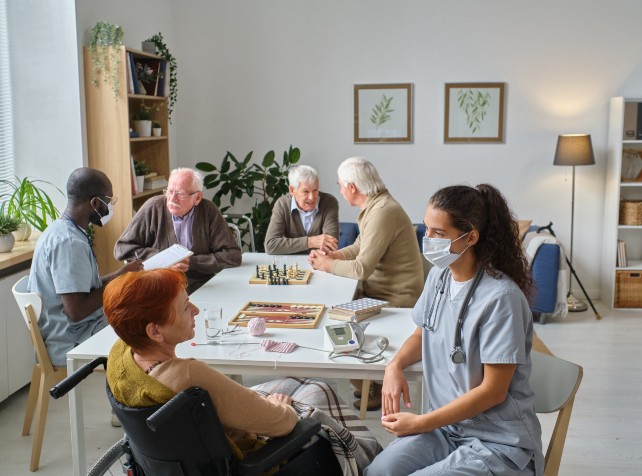For most Australians, the phrase “aged care” still brings to mind large residential homes, hospital-like corridors, and shared dining halls. But across the country — and around the world — new housing models are emerging that challenge this image. From co-housing communities to intergenerational projects and purpose-built “dementia villages,” these alternatives aim to give older people independence, connection and dignity, while reducing the isolation so often linked to ageing.
Australia’s population is ageing rapidly, and demand for aged care is increasing. At the same time,
surveys show that most older Australians want to stay active, independent, and socially connected for as long as possible. Yet traditional residential aged care has struggled with reputational damage in recent years. The
Royal Commission into Aged Care Quality and Safety revealed systemic issues in staffing, quality, and design. Many families are now open to different ways of living in later life — models that look less like institutions and more like communities.
Subscribe for FREE to the HealthTimes magazine
1. Co-housing and community villages
One of the most promising approaches is
co-housing, where small groups of older people live together in purpose-built homes or retrofitted apartments. Each resident has their own private space, but kitchens, gardens and living areas are shared.
Advocates argue that co-housing reduces loneliness, spreads the cost of living, and encourages mutual support. In Melbourne, several pilot projects are underway where residents share spaces but also pool resources for cleaning, cooking or transport.
Closely related are community villages, membership-based networks where older people remain in their own homes but access shared services, social activities, and volunteer support through a central hub. Originating in the United States, the “village model” has spread internationally, with early experiments now appearing in Australian cities.
The
Housing for the Aged Action Group (HAAG) has been vocal about the need for more diverse housing options, especially for older renters at risk of homelessness. HAAG argues that models like co-housing and villages not only provide shelter but also build resilience through community.
2. Intergenerational living
Another innovative model is intergenerational housing — projects that intentionally bring young and old under the same roof. In Europe, some universities partner with aged care providers to house students with older adults at reduced rent, in exchange for companionship or light support.
Australia has begun to explore similar ideas, with pilot programs bringing university students and older residents together in shared housing or retirement communities. Older people benefit from the energy and digital skills of younger housemates, while students gain affordable housing and a sense of family far from home. These arrangements challenge stereotypes of both ageing and youth, showing that different generations can enrich one another’s lives.
3. Dementia villages
Perhaps the most striking innovation is the rise of dementia villages — purpose-built communities that replicate the rhythms of everyday life while providing secure, specialised support.
The most famous example is
Hogeweyk in the Netherlands, often called the “dementia village.” Residents live in small households, shop in a local-style supermarket, and walk through streets designed to feel familiar, all within a safe perimeter. Staff dress as shop assistants, neighbours or gardeners, creating a normalised environment rather than a clinical one.
Australia has followed this lead with projects like the
Korongee Dementia Village in Tasmania. Korongee’s design mirrors suburban life, with houses clustered around streets, a café, and a cinema. Each household reflects different lifestyle themes — from “working class” to “creative” — so residents can live in environments that resonate with their past.
Families report that this model provides dignity and comfort, while staff say it reduces behavioural distress often seen in traditional facilities.
Of course, scaling these models is not without barriers. Funding remains a challenge: dementia villages require significant capital investment, while co-housing and intergenerational housing need creative financing to get off the ground. Regulations are also designed around traditional institutional models, making approvals and funding complex. And while interest is growing, many Australians are still unfamiliar with these alternatives, meaning public acceptance will take time.
Experts in ageing and architecture, including researchers at the University of Melbourne, argue that reforms must include housing diversity as part of the national aged care strategy. Without this, innovative models risk being accessible only to wealthier Australians.
The future of aged care housing may therefore be less about “facilities” and more about communities. Whether through co-housing, intergenerational living or dementia-friendly design, these models share a common principle: older Australians deserve places that feel like home. Innovation will not replace traditional aged care entirely — there will always be a role for residential facilities with high-level care. But the emergence of new models offers choice, dignity and social connection, helping to reimagine what ageing can look like.
If aged care reform is to succeed, it must embrace housing diversity as well as workforce change. Co-housing, intergenerational living, and dementia-friendly villages will not replace traditional facilities, but they can set a new benchmark for dignity, choice and connection in later life.












